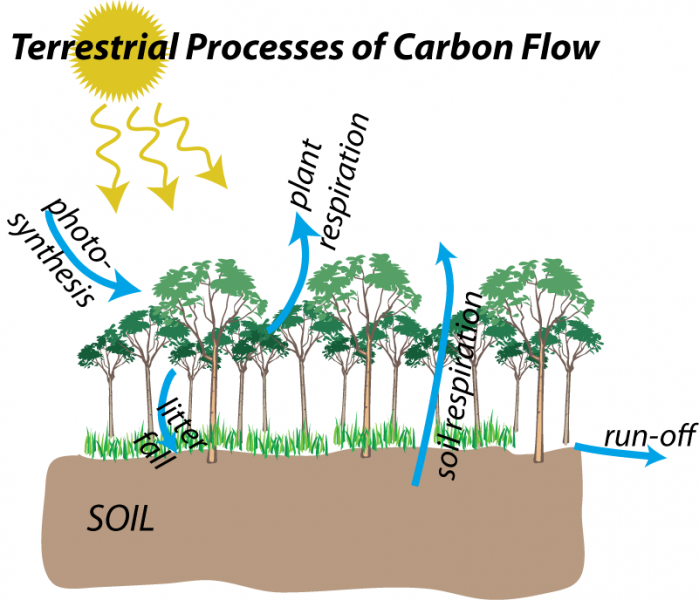Print
The Terrestrial Carbon Cycle
Carbon moves through the terrestrial realm through five main processes, which are represented as blue arrows in the figure below:

Carbon Flow in Terrestrial Reservoirs
Credit: David Bice © Penn State University is licensed under CC BY-NC-SA 4.0
We will briefly explore these processes, beginning with photosynthesis.
